Best vegetables to grow in raised beds: 15 easy and rewarding crops for your garden
Want to know the best vegetables to grow in raised beds? Enjoy fresh and delicious produce with these picks
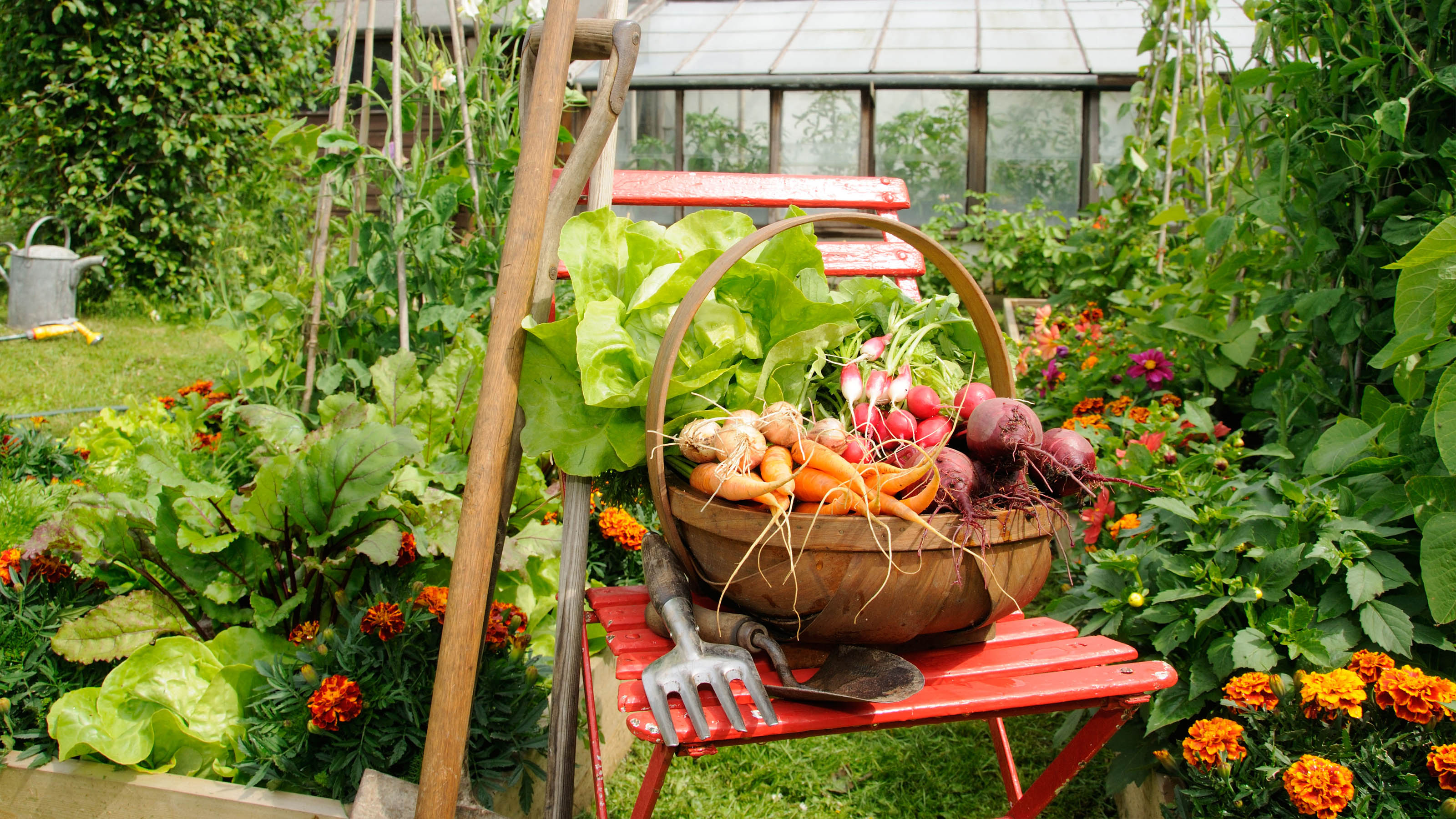

More people are sussing out the best vegetables to grow in raised beds these days – and with good reason. Growing your own crops is super rewarding and isn't too tricky to do. Fresh, seasonal, and home-grown produce also tastes much more delicious than what you'd find in the supermarket.
What's more, growing veggies in raised garden bed ideas is much easier than growing them straight in the ground. First, as the soil is above normal ground level in these structures, it warms up faster in spring which gives young plants a head-start. It's also much easier to fertilize and monitor the soil in a raised bed. You can even bring in new soil altogether if you want to grow, for example, crops that prefer acidic conditions but your normal garden soil is alkaline. Of course, raised beds are also easier to access, especially if you have a bad back or mobility problems. And, they look fantastic too.
When it comes to the veggies themselves, there are lots to choose from. From reliable stalwarts that will yield generous crops to varieties that are a little more unusual, we've rounded up some of the very best vegetables to grow in raised beds below.
The best vegetables to grow in raised beds: 15 top picks
1. Radishes
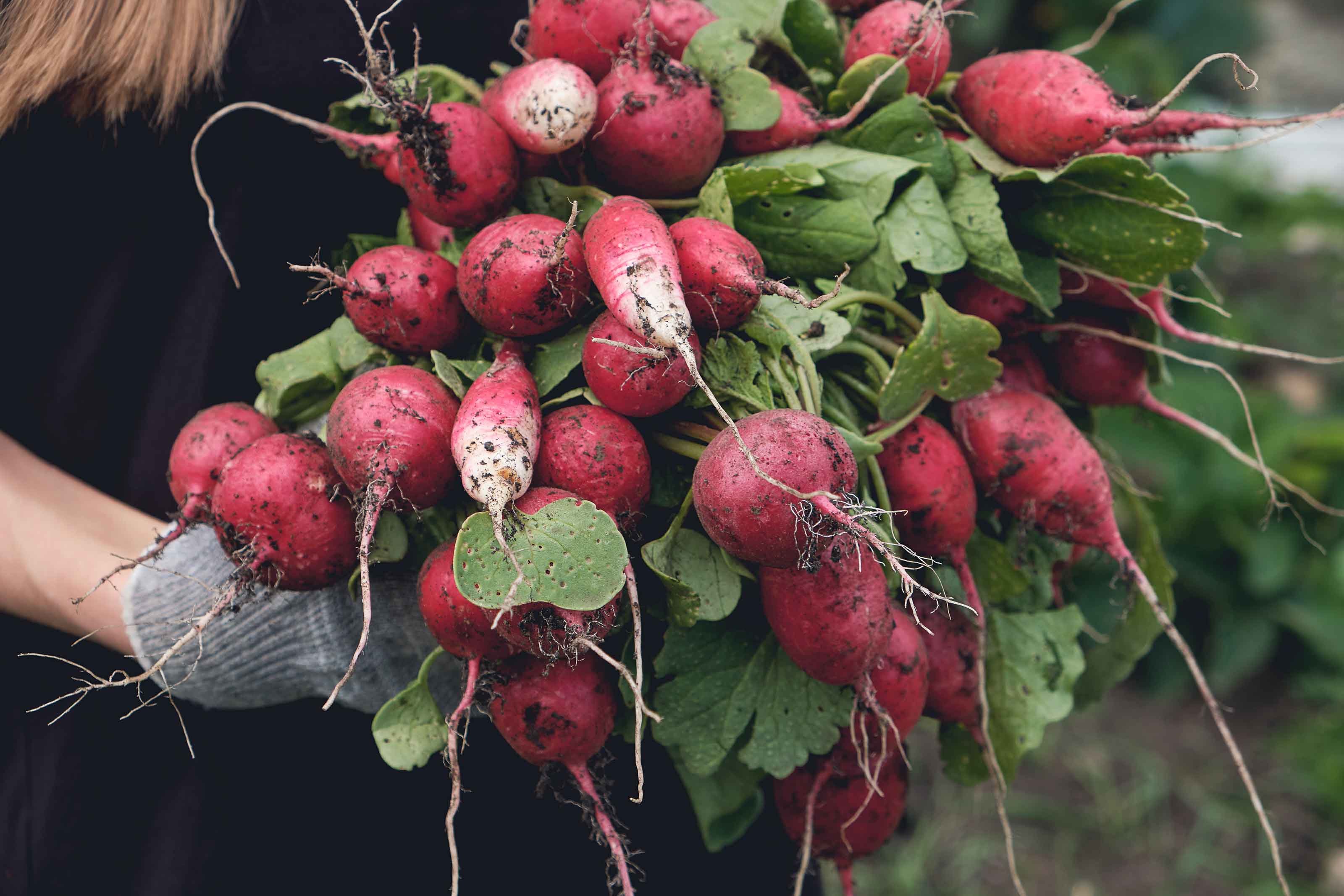
Fast and reliable, radishes are definitely one of the best vegetables to grow in raised beds
If it's fast results you’re after, you can't go wrong with a crop of radishes as they're one of the quickest growing of all the veg crops you're likely to plant. You'll see their rosy-red shoulders appearing in a matter of three to four weeks after sowing. They're great in salads and make a spicy addition to stir-fries too.
Sow seeds at regular intervals from March to mid-August for a constant supply. Make sure you sow them very thinly, spacing them about 2.5cm apart, says Chris Bonnett from Gardening Express. For fat, juicy radishes, you'll need to thin them as they grow, too.
They are super easy to plant and don't require much ongoing maintenance, Chris adds, which is why they're also on our list of the best plants for beginners.
2. Chard
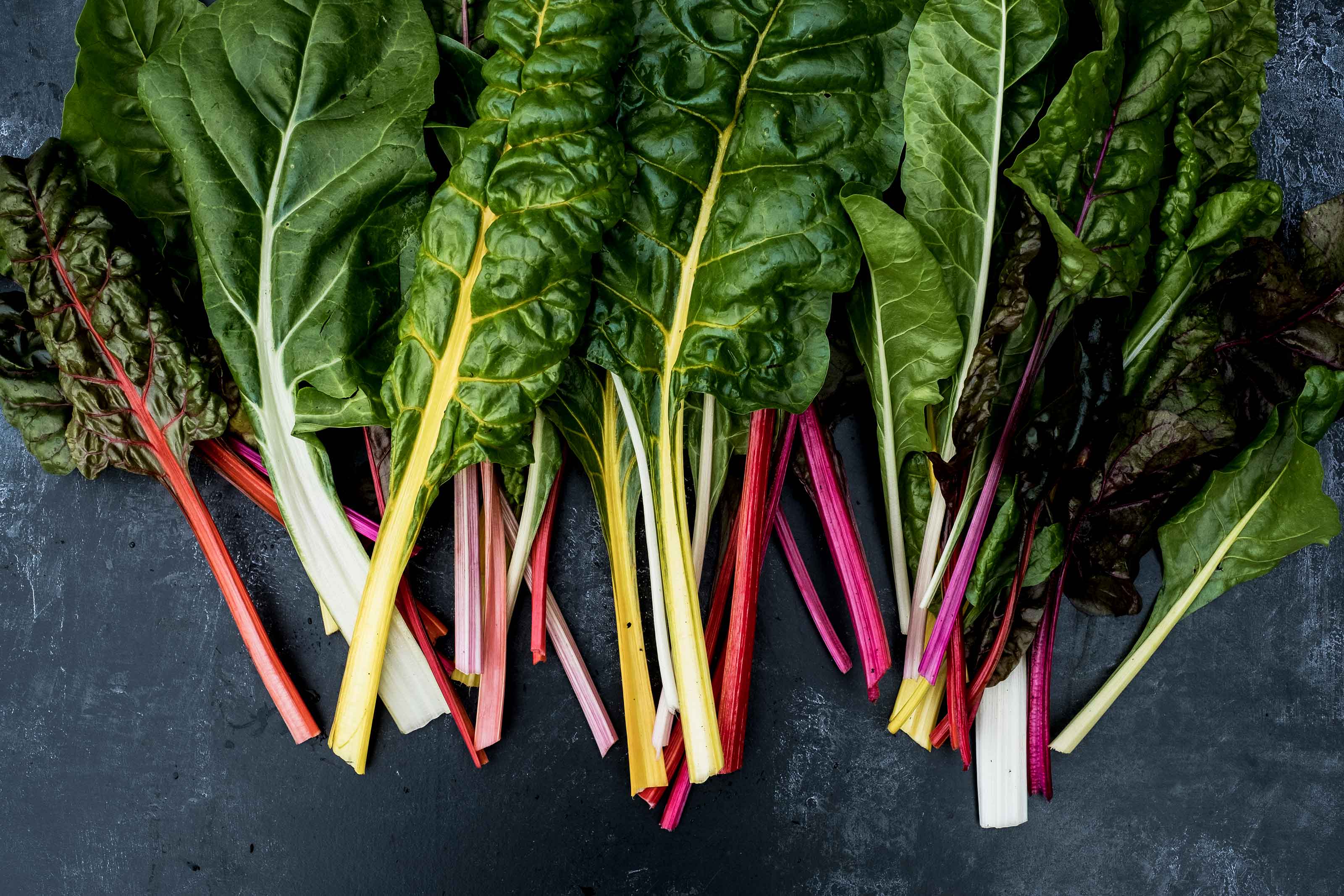
Chard comes in a stunning variety of candy-stripe colors
Chard, otherwise known as leaf beet, is a hardy and easy-to-grow choice for raised garden beds. Its stalks come in a variety of gorgeous colors – from creamy white to yellow, pink, and purple. Sliced up and cooked down in butter, chard makes a delicious side to main meals.
According to the RHS, chard grows best in sunny, open sites and favors rich and moist soil with good drainage. Sow seeds in April to August in broad drills and treat them as cut-and-come-again crops (picking a few leaves from each plant at regular intervals). Thin out smaller seedlings where needed – these can be used in salads.
3. Onions
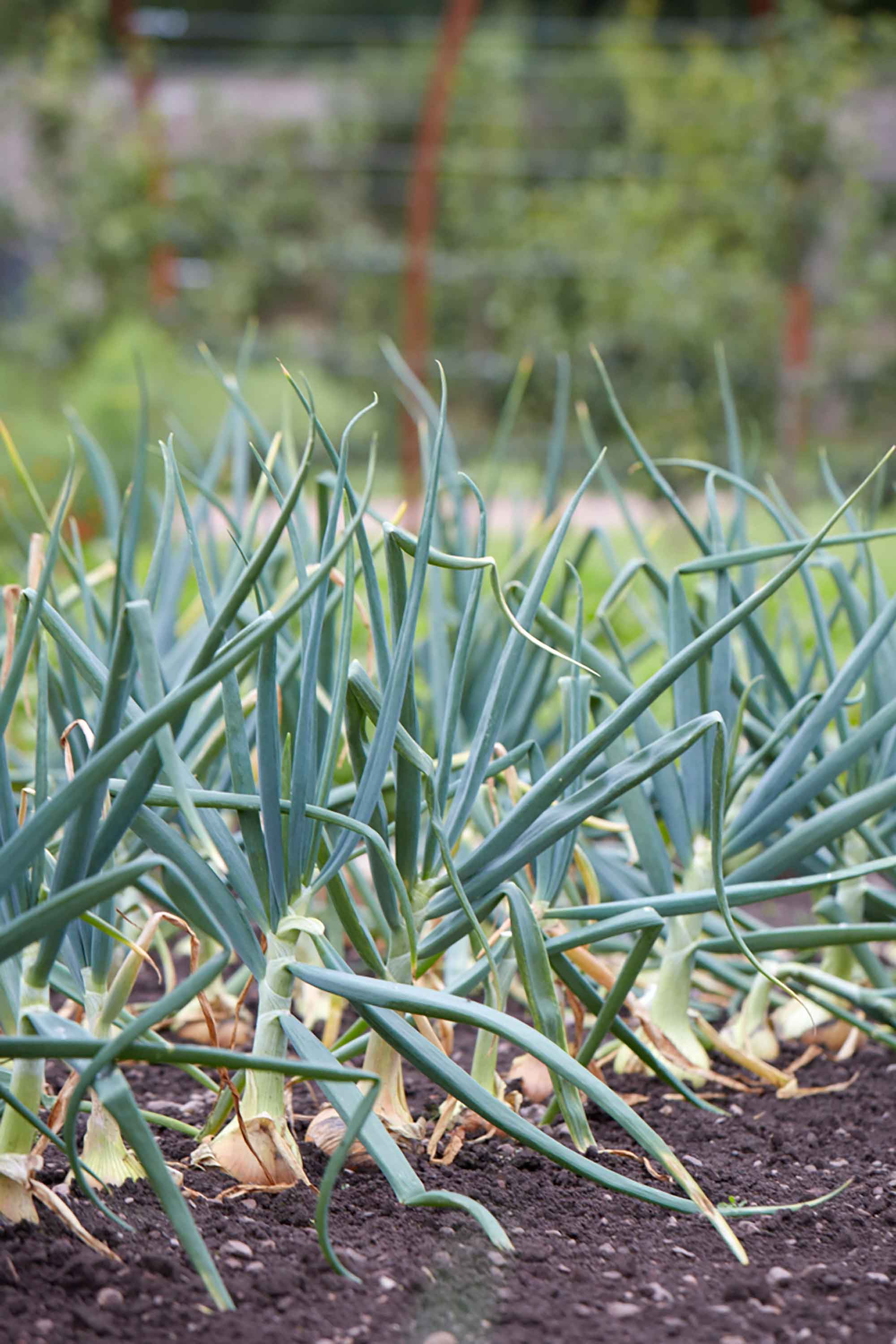
Onions have to be one of the best vegetables to grow in raised beds as they're easy to plant and have lots of uses in the kitchen
Onions might not sound overly exciting, but they are the base of so many delicious meals, are great in burgers when you're firing up your best BBQ, and can be pickled too. If you grow these, you'll certainly find lots of ways to put them to good use.
Chris Bonnett from Gardening Express says that although onions grow comfortably in beds, you'll need to ensure that there is plenty of space above and below them, as the roots of the plant extend.
'To get your onions growing, simply make a small hole in the soil with your fingers, put the onion set into the hole and cover round with soil,' Chris adds. Only the very top of the onion set (the immature bulb) should be visible on the soil surface. Make sure you plant it with the roots facing downwards.
Our guide on how to grow onions has lots more advice.
4. Spinach
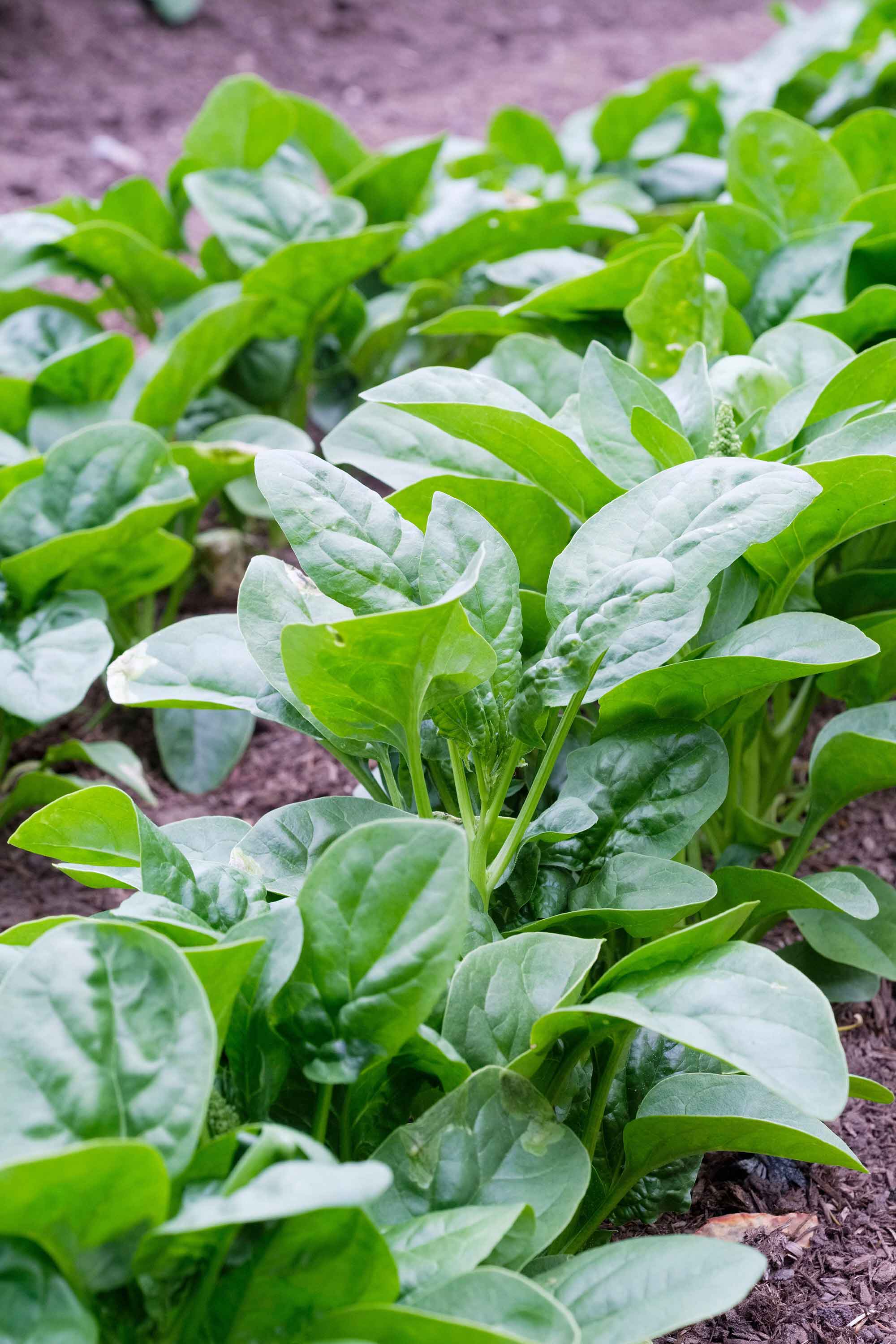
Leafy spinach is a nutritious and low-maintenance choice – a great addition to the list of best vegetables to grow in raised beds
Another quick and easy-grow vegetable that reaps plenty of rewards is spinach, says Chris Bonnett from Gardening Express. Plus, it's full of iron and other nutrients, so makes a fabulous addition to anyone's diet.
Planting new ones every month ensures leaves all year, until the first frost, says Chris. Sow them into rows about 30cm apart with the seeds set 2.5cm apart.
'Plants can quickly bolt in hot weather, which causes the leaves to turn bitter,' adds Chris. 'Prevent this by sowing in light shade during the heat of summer and by keeping the ground moist.'
5. Carrots
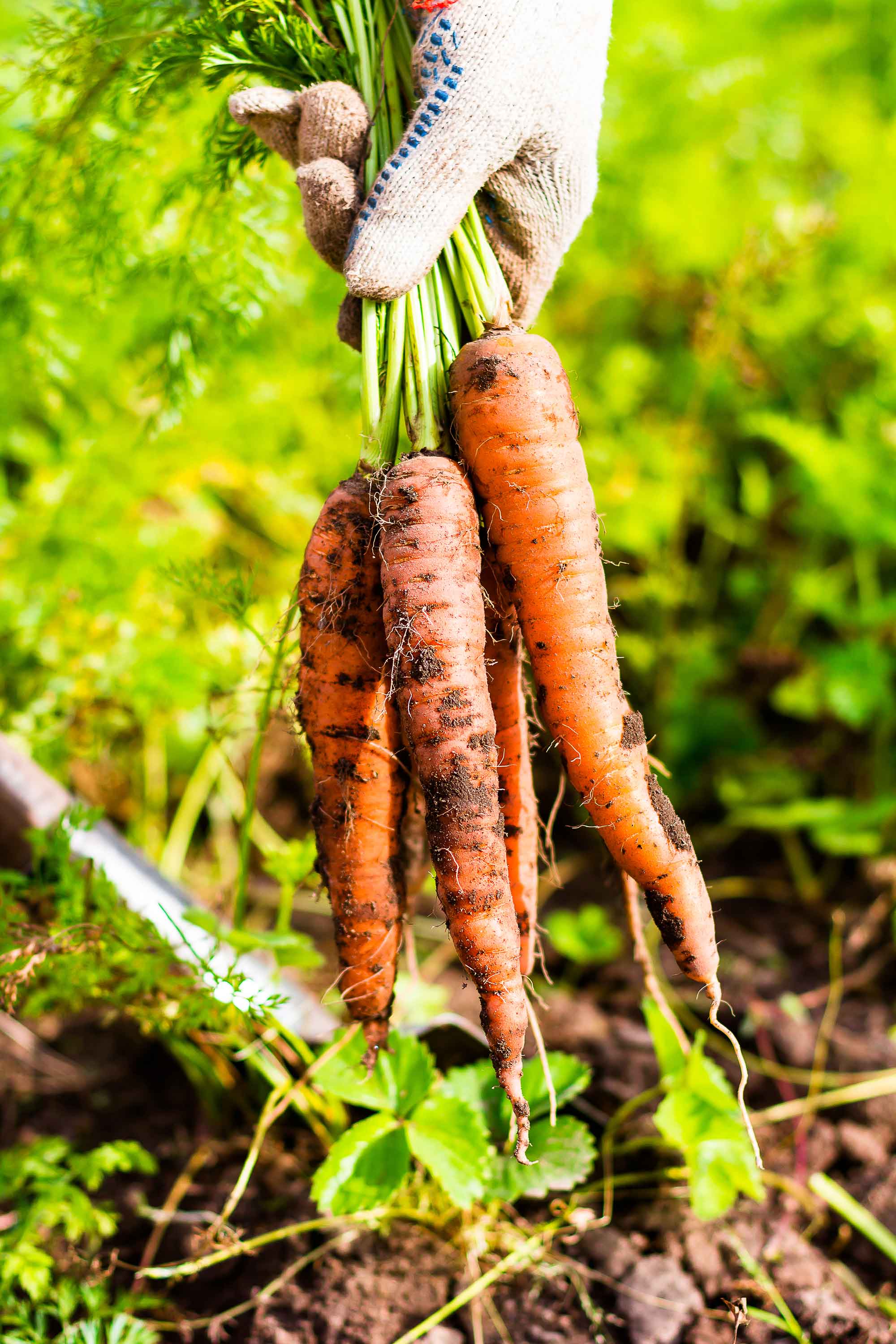
Sweet and juicy carrots are one of our best vegetables to grow in raised beds
Carrots are sweet and delicious and home-grown ones are unmistakably more flavorful than those bought in the shop. Don't just stick to orange – try purple, yellow, or even white varieties for an extra boost of color at dinnertime.
Growing carrots in the open garden is near impossible if you have compacted or stony soil, as this will cause them to 'fork'. In a raised bed, however, you can ensure the growing medium is just right for them.
What's more, carrot fly – the bane of all veg growers – can only fly very close to the ground, so growing your crop in a raised space is helpful for deterring them. Sow seeds from April to early July, and harvest a couple of months later.
There are more tips in our dedicated guide on how to grow carrots.
6. Rocket
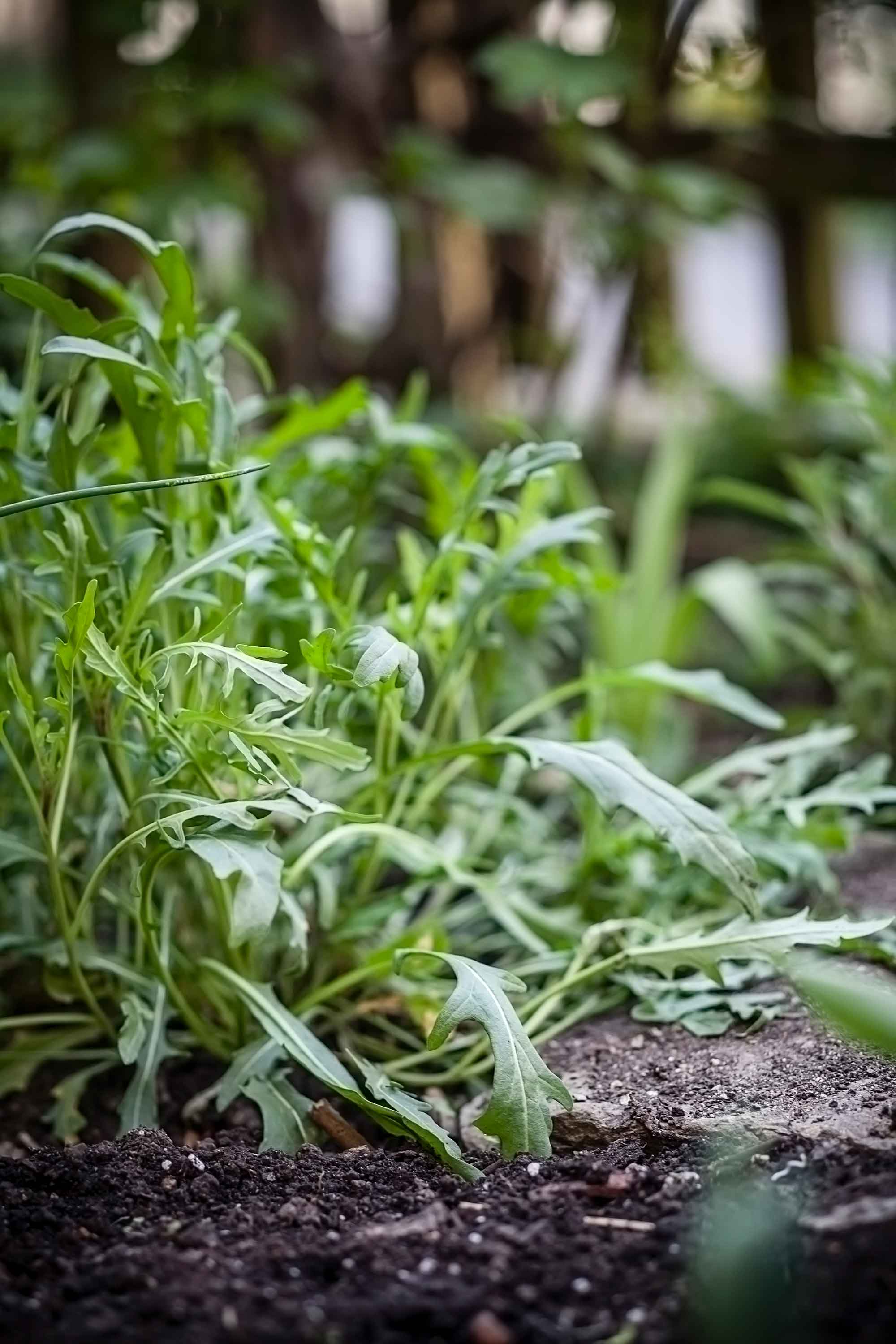
Spicy rocket offers a peppery kick to salads
Want to pep up your salads with a peppery hit? Then rocket has to be on your list of the best vegetables to grow in raised beds. It's easy and quick to grow, just make sure it has rich soil and plenty of water, in a well-drained and sunny spot. If you're sowing directly into the ground, thin plants out continuously for a healthier harvest.
'Rocket has an unmistakable flavor and, when it comes to harvest time, you can control just how it tastes by choosing when to pick the leaves,' says the experts at Squire's Garden Centres. 'Young leaves offer a milder flavour, whilst the older taste wonderful when cooked.'
7. Patty pans
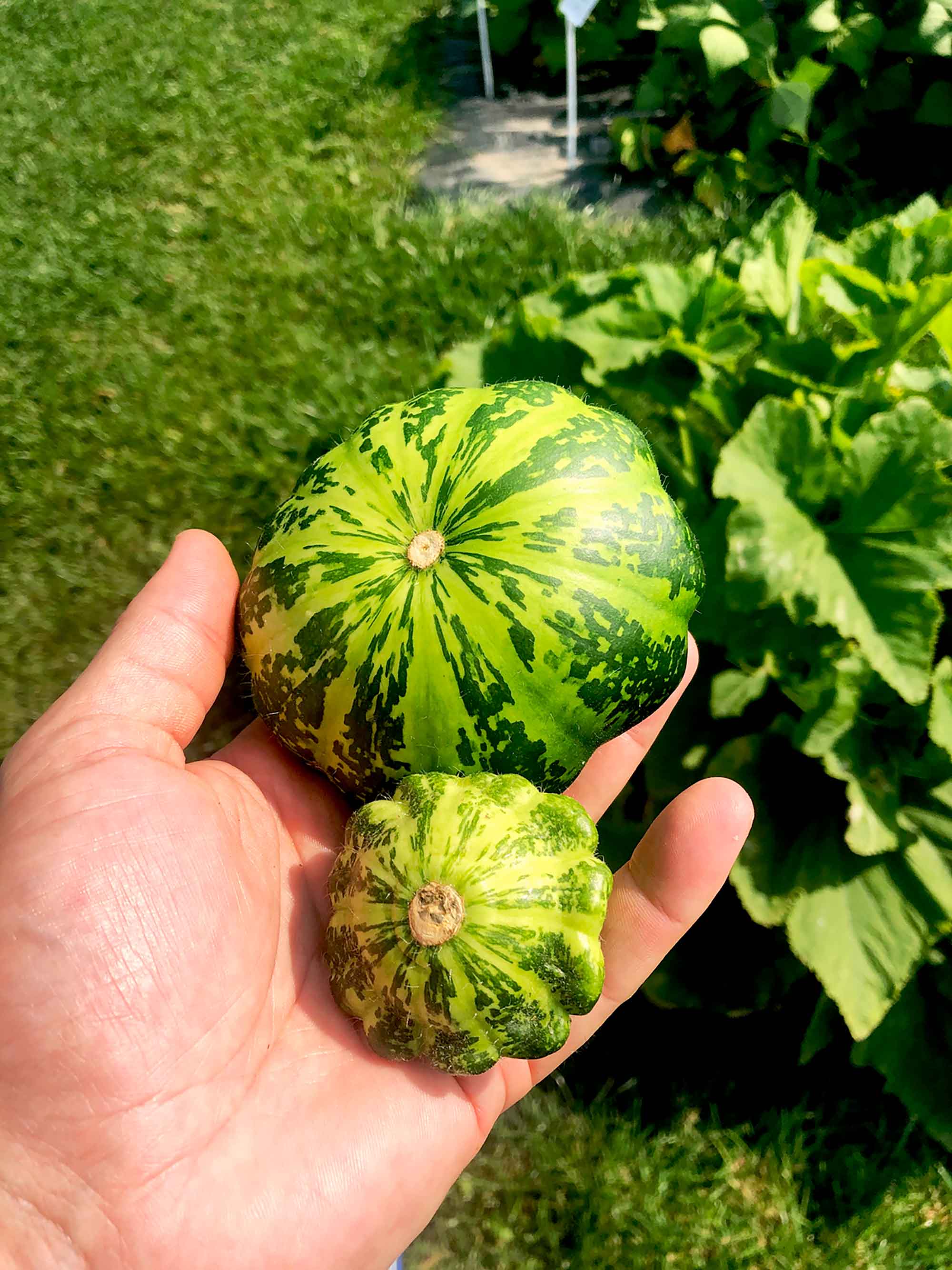
The Patty Pan 'Greendisc' from Suttons has an eye-catching appearance
Patty pans are a member of the squash family, but unlike lots of squash, they don't need to be peeled. They have a pleasingly flat and scalloped shape and come in tones of yellow, white, and green.
'Greendisc' is a unique-looking variety with mottled skins and a nutty flavor. They are productive and compact plants, explains the team at Suttons, with fruits holding their mottling until quite big before turning solid green (up to 35cm wide). Harvest from August to October; smaller patty pans can be cooked like courgettes whilst larger ones can be stuffed and baked for a delicious and healthy dinner. The plants themselves reach heights of 20-24" and a spread of 36-39".
Patty pans tend to like sun, shelter, and well-drained but moist soils. Seeds can be sown directly outdoors when all risk of frost has passed, in clusters of three at intervals of around 24" – thin out to the strongest seedling as they grow. You can also start them in your greenhouse ideas – simply single sow in pots and don't forget to harden them off before planting outdoors.
8. Tomatoes
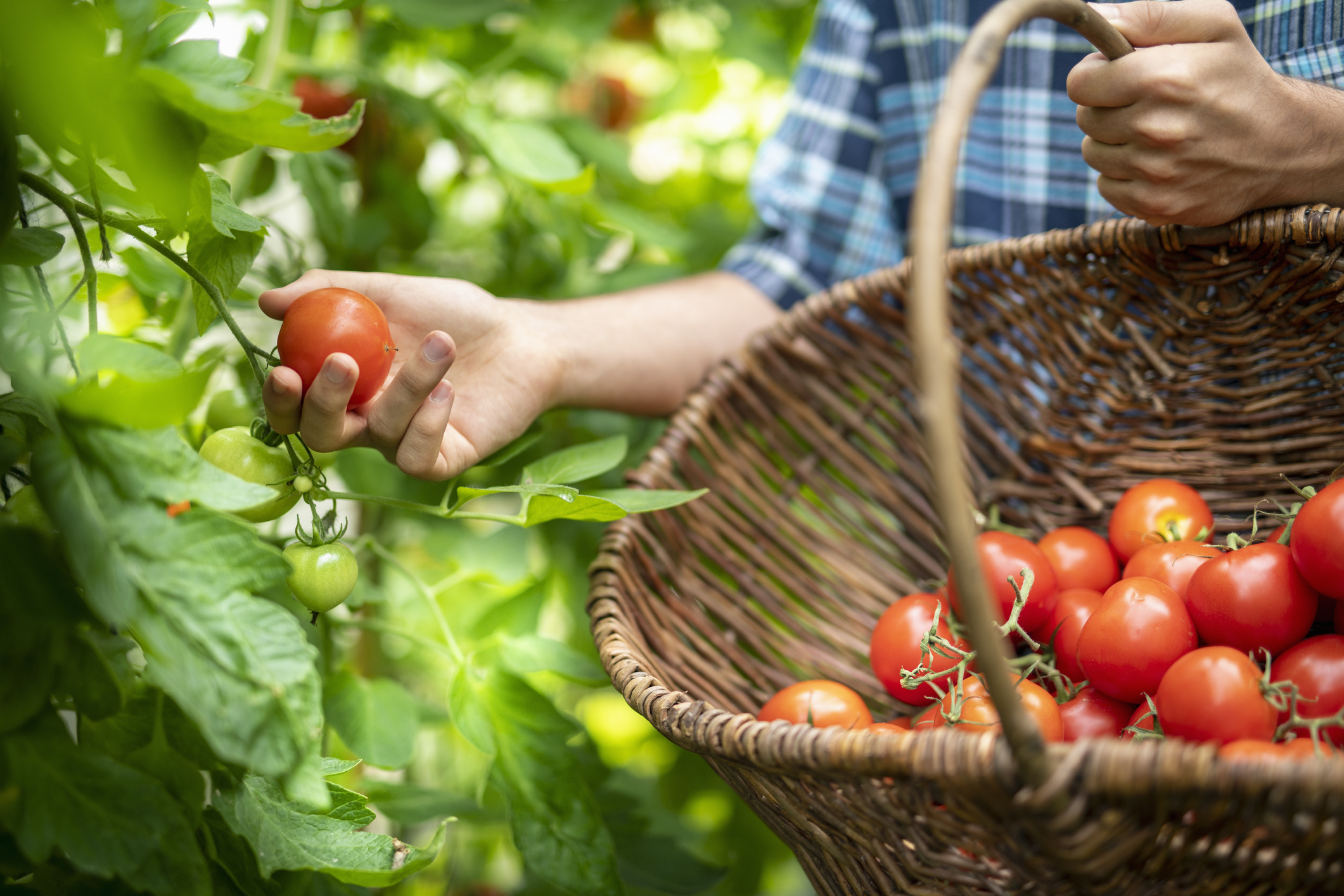
Pasta, pizza, salads – tomatoes are a must-have summer crop
Tomatoes are undoubtedly one of the best vegetables to grow in raised beds as they are such a versatile and delicious ingredient – especially if you're a fan of Mediterranean food.
They need good, rich soil and to be kept well-watered, both of which are much easier to achieve in the confines of a raised bed. Tomatoes don't need the soil to be deep though, so long as they’ve got enough room for the roots to spread out horizontally (think how shallow a grow-bag is). This means that they can be grown even in the shallowest of raised beds, or even a raised planter.
Sow seeds indoors in February and, depending on the weather, you could begin harvesting from early July. There are more tips on how to grow tomatoes in our guide.
9. Lettuces
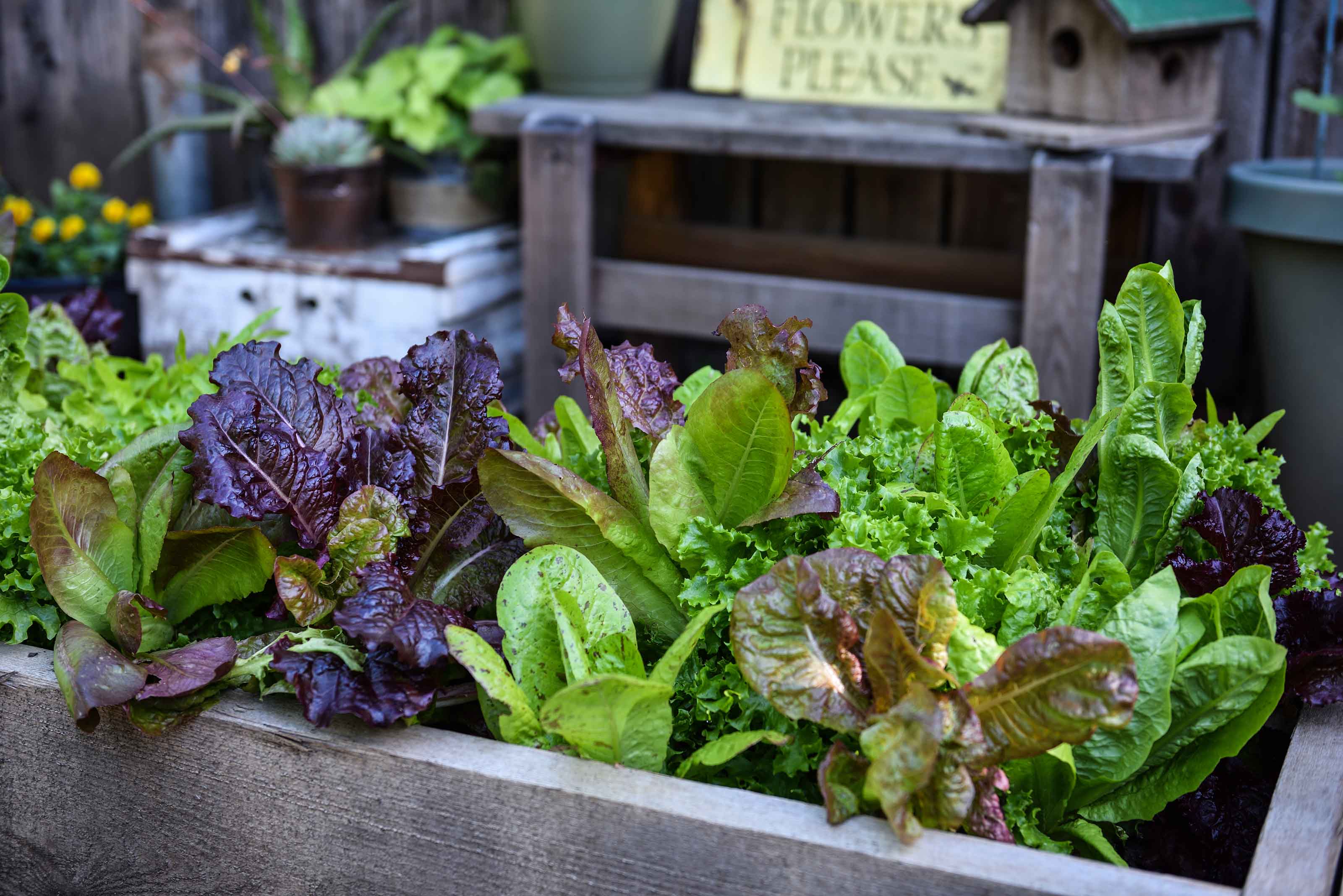
There are lots of lovely lettuce varieties, including ones that will grow through winter
Seeds can be sown straight into your raised beds early in the spring, as lettuce doesn't mind cooler weather. The warm soil in them means they will germinate quickly, and the plants will then be in full flow well before it's time to start introducing other crops to the bed.
If you pick individual leaves rather than pulling the whole plant, you should get four or five pickings from each lettuce. Sow new seeds until late June to early July and you'll have fresh, home-grown leaves for most of the summer.
There are also some leafy varieties that you can grow through the colder seasons – our guide on growing lettuce in winter has lots of advice.
10. Garlic
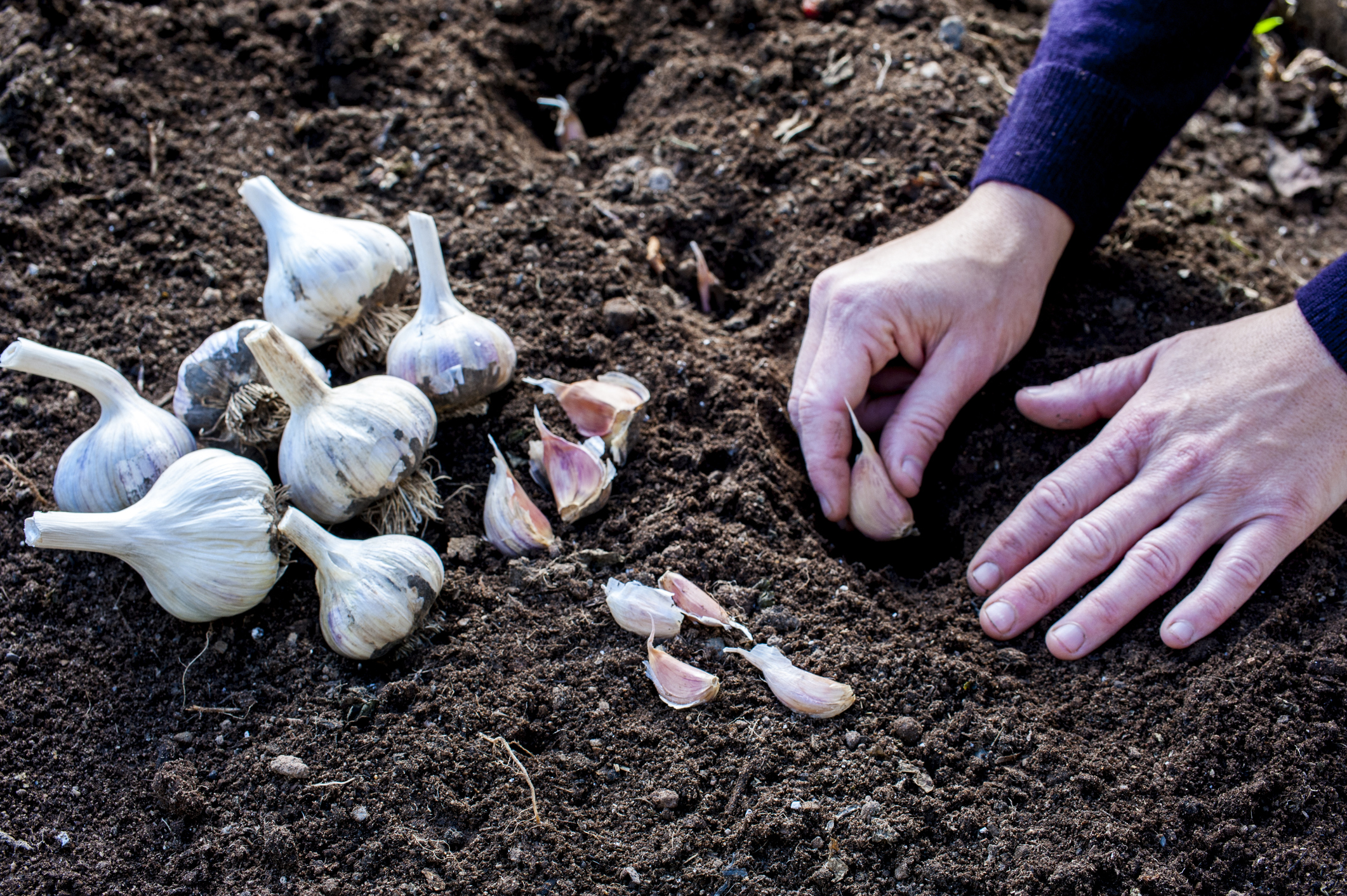
Growing garlic is simple and the results are delicious
Garlic bread, garlicky mushrooms, garlic butter drizzled over steak – yum! It's tricky to grow in the open garden but in a raised bed, where you can give it the light and open-textured growing medium it needs, it's a doddle.
Break open the bulb and separate the cloves, then plant them individually, pointy end up, in November (they need a period of cold to get going). In spring, they’ll be ready to harvest as fat new bulbs.
There's more tips on how to grow garlic in our grow-your-own guide.
11. Beetroot
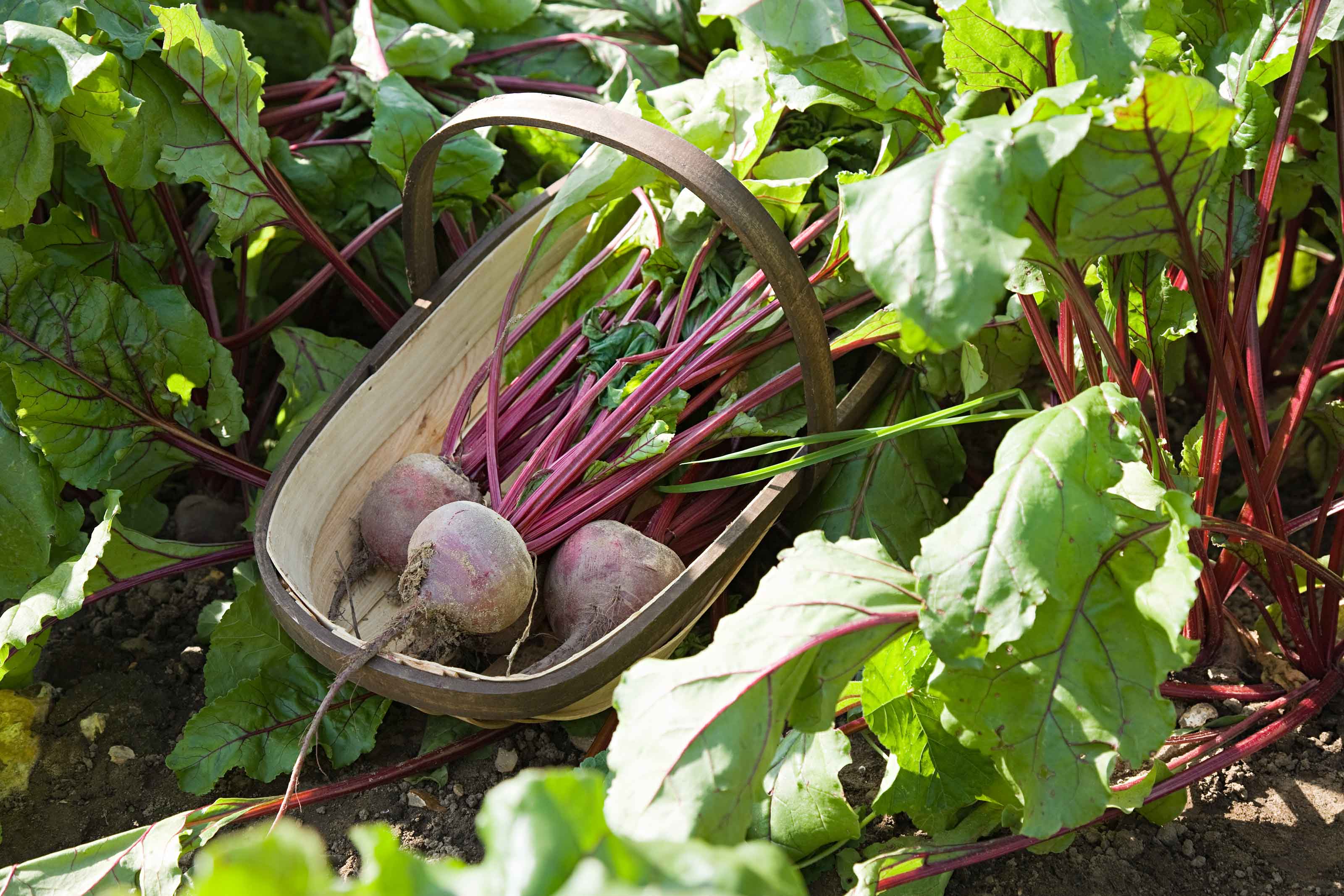
Vibrant beetroot adds a pop of color to summer lunches
Learning how to grow beetroot is definitely worthwhile. When picked at golf-ball size, home-grown beetroot is sweeter and more tender than any you've ever bought from a shop. The plants thrive in raised beds – just sow seeds directly into the soil or compost in early April and keep moist.
Sow more seeds at two-weekly intervals until June and you'll be harvesting beetroot over several months. Experiment with varieties – as well as the classic purple kinds you can also find golden beetroot and the pink-and-white-striped 'Chioggia' variety.
12. French beans
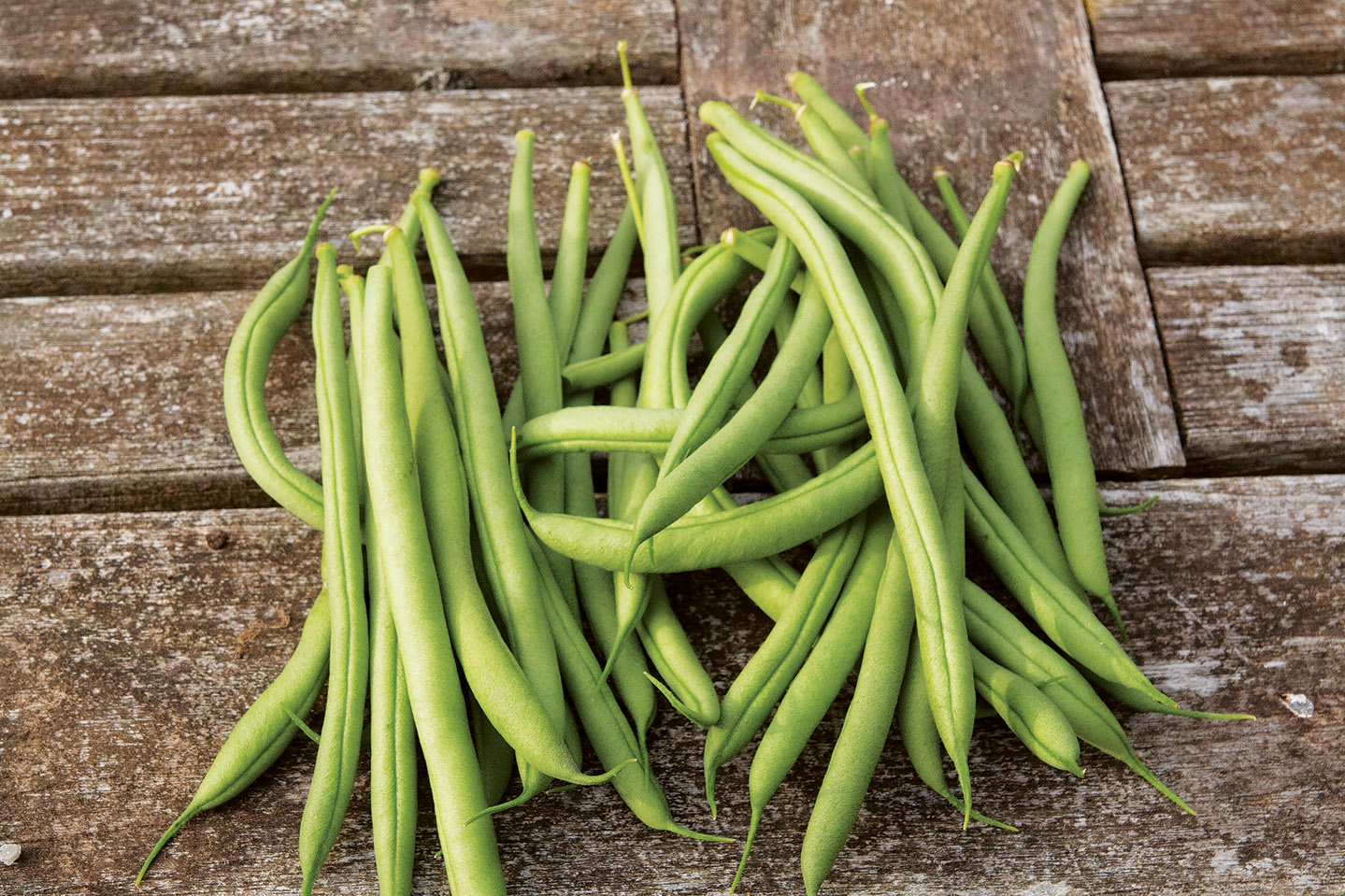
Try dwarf varieties for compact spaces
Any plant that grows up rather than out is a winner in a raised bed as it leaves you space to grow other things around it. French beans trained up climbing plant support ideas are perfect. Start sowing around mid-May and harvest ten or so weeks later.
Choose a smaller variety, such as super-sweet, tender and reliable ‘Cobra’. Or, try a dwarf variety like purple 'Mistik'. 'Dwarf green beans are much loved by kids and only grow to about 61cm tall, meaning they will be great in raised beds,' says Chris Bonnett of GardeningExpress.co.uk. 'Poke the seeds into the soil so they are 25-40cm apart,' he continues. 'Sow a batch once a month until the end of summer to get a regular stream of green beans.'
13. Courgettes
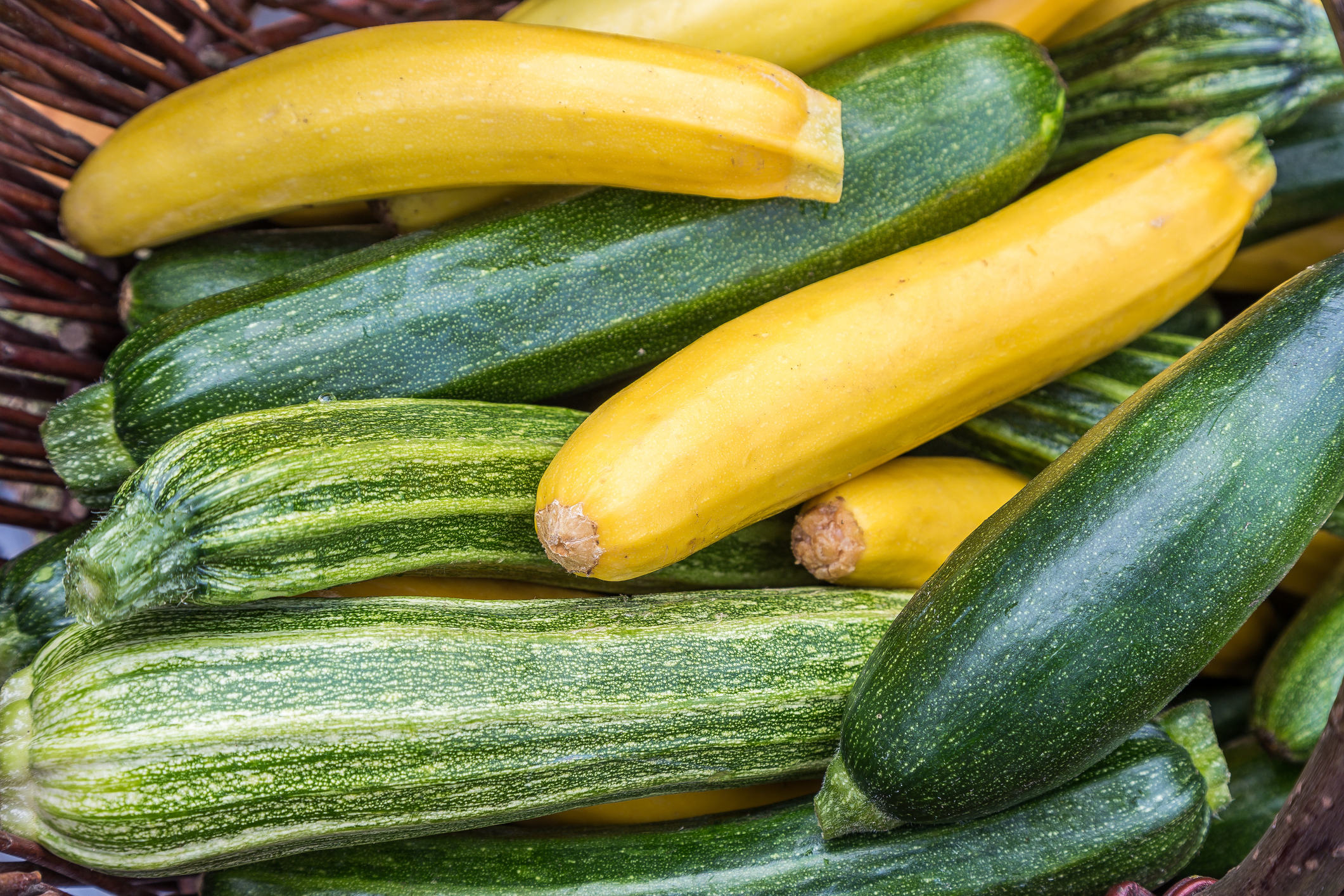
If you want a generous crop, then courgettes are a go-to
Looking for the best vegetables to grow in raised beds that will provide bumper crops? Then courgettes are the grow-your-own match for you.
Just one plant will provide you with several courgettes a week over the whole summer. To save space, you can train a trailing variety up a support rather than letting it creep along the ground – simply tie the main stem up a stake as it grows.
Sow seeds indoors in April, plant out once the seedlings are big enough to handle and harvest about eight weeks later. Our expert guide on how to grow courgettes has tons more tips.
14. Peas
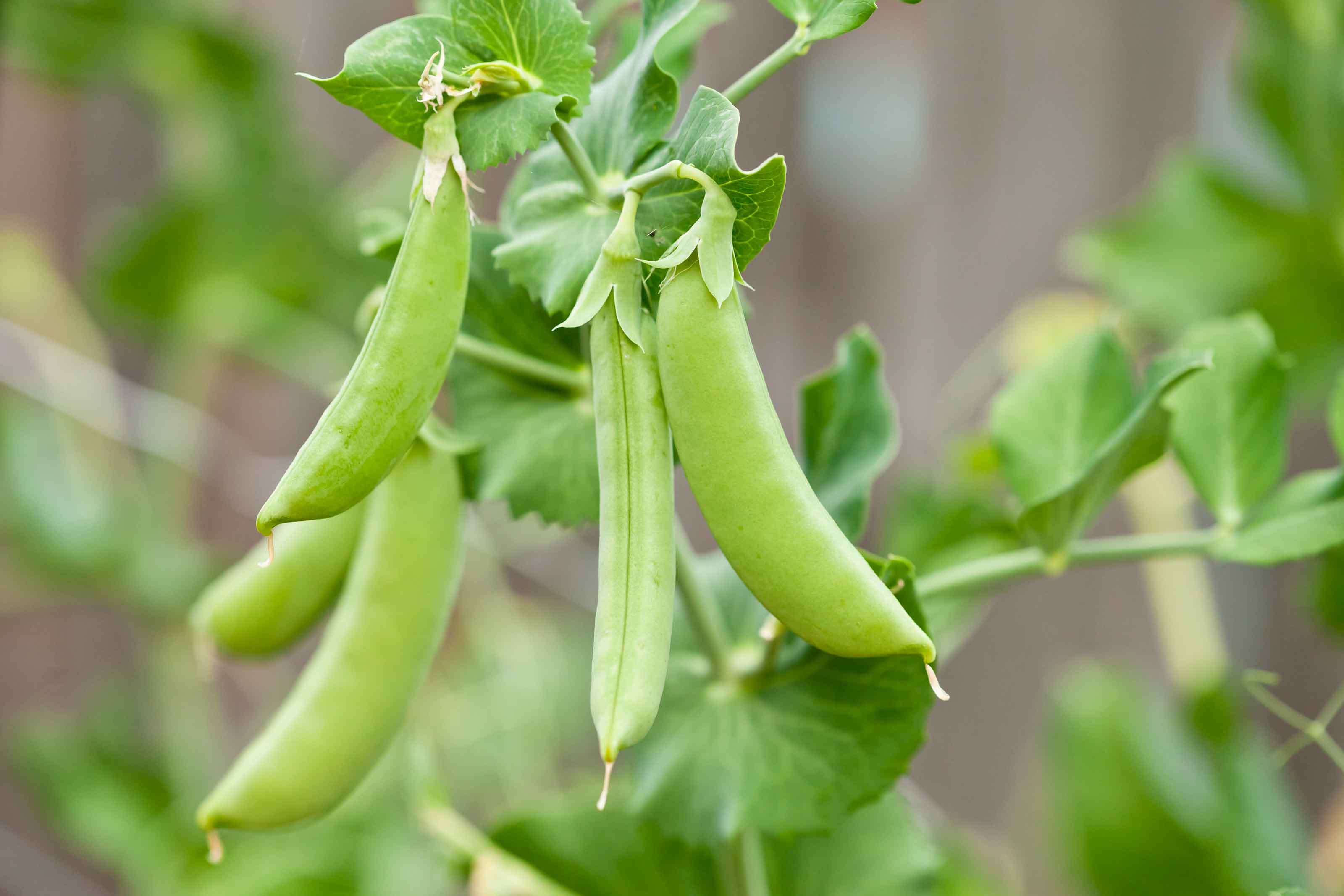
Peas are a delight to grow, and you can add the shoots to salads
Sweet and delicious, peas are another of our best vegetables to grow in raised beds. They are best trained up a netting support – install it along one side of the bed for optimum use of space.
Pea seeds are often eaten by mice before they germinate outdoors, so sow them indoors in long 'root trainer' pots. With these, there's less root disturbance (which peas hate) when you plant them out once they're large enough to handle. Sow seeds in March and harvest from the end of June.
15. The Three Sisters
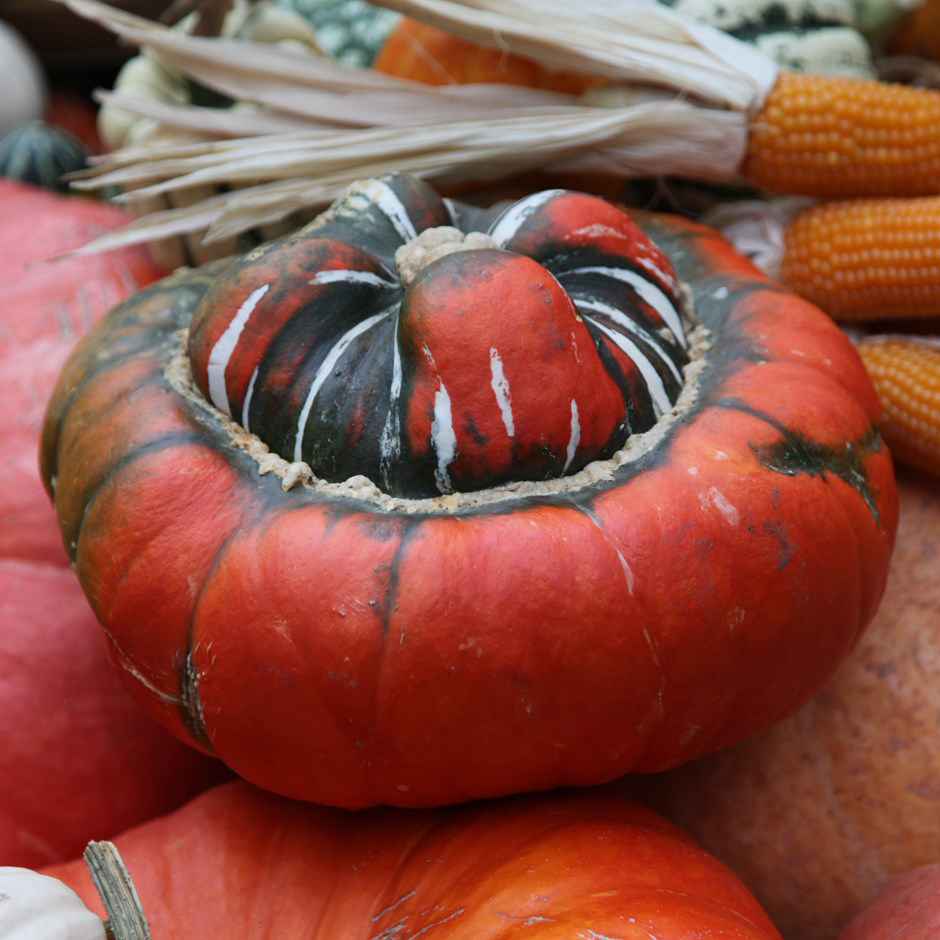
This colorful squash is grown from Waitrose Garden seeds
To really make the most of the space in one raised bed, try the clever combination known as 'The Three Sisters': sweetcorn, climbing beans, and squash.
The tall sweetcorn plants provide a support for climbing beans, while a squash plant scrambles around their feet, suppressing weeds and helping to shade the ground so that more moisture is retained. A good layer of well-rotted horse manure spread over the bed before your plants go in the ground is all that’s needed to give all three crops a boost. They should then supply you with an excellent harvest towards the end of summer. Perfect!
Looking for more mutually beneficial plants to grow? Our guide on companion planting is well-worth checking out.
How do you start a raised garden bed?
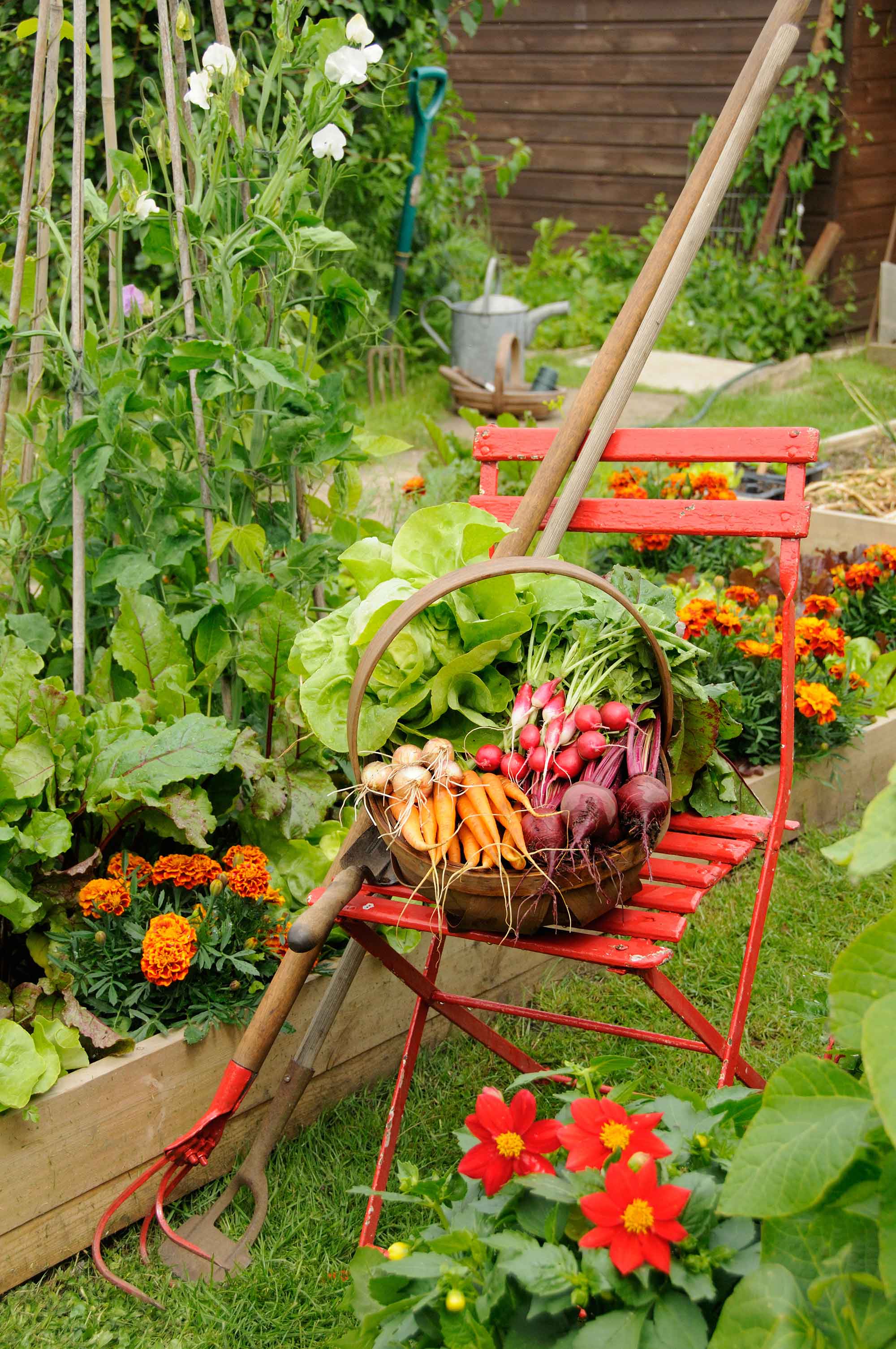
Starting a raised bed is simpler then you might think
Now you know the best vegetables to grow in raised beds. But, if you don't actually have the structures themselves yet, you might be wondering how to get started.
First of all, you can choose to clear the area of weeds and grass before you lay down your raised bed or, for an easier option, you can follow the 'no dig gardening' method. For this, simply lay a sheet of cardboard over the base of the raised bed, on top of any existing vegetation. Wet the cardboard thoroughly, then cover with a layer of soil or good potting compost to a depth of at least 15cm. Weeds and grass will quickly be smothered, and by the time any crops that need to get their roots down deep are big enough, they will easily be able to push through the decomposing layer of cardboard to the original soil below.
Raised beds can be installed on a hard base, such as concrete, too. But bear in mind that unless they are a good height, you won’t be able to grow long-rooted crops like parsnips. You'll need to put a drainage layer in before adding soil or compost – 8cm of coarse gravel, stones or hardcore is ideal.
Our guide on how to build a raised bed has more advice.

Sarah is a freelance journalist and is lucky to be able to write about her two main passions: gardening and food. She recently took on an allotment too, and is really loving growing all her own fruit and veg then bringing it home to try out in new recipes for her food and gardening blog, A Cook's Plot.
